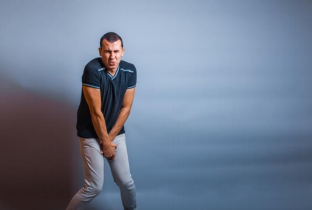A sports hernia (athletic pubalgia) is a very painful soft tissue injury (a strain or tear of the tendon muscle or ligament) that occurs in the groin area. Sports hernias are different from abdominal hernias because sports hernias materialize in the inguinal canal. With a sports hernia, the oblique muscles and tendons that attach to the pubic bone are often most affected in the lower abdomen. In most cases, the tendons that attach the thigh muscle to the pubic bone (adductors) are often stretched or torn. This type of groin pain often arises during sports (hockey, soccer, wrestling, skiing, running,
hurdling, football, etc.) that require repeated, sudden movements, a change in direction, or twisting movements. Severe groin pain lessons with rest but returns when twisting movements of the activity reaggravate the injury.
The injury can become chronic and debilitating, and consequently delay an athlete’s return to the sport.
In 2019, LeBron James suffered a severe sports hernia that sidelined him for several weeks. The more severe the injury, the more likely an abdominal hernia can develop, especially if the sports hernia is left untreated. If you experience severe groin pain that does not improve, please consult with your primary care physician or general practitioner for a physical exam to rule out an inguinal hernia, which can also be caused by athletic movement, to test your range of motion and motor strength. If diagnostic and severity cannot be determined, an X-ray, ultrasound, computerized tomography (CT scan) or magnetic resonance imaging (MRI) of the pelvis may be ordered to assess bone, nerve, and soft tissue damage. The treatment plan may consist of rest, ice, NSAIDs (ibuprofen, naproxen) to reduce swelling and pain in the inner thigh and abdomen. Depending on the severity of the injury, surgery may or may not be necessary.

References
American Academy of Orthopaedic Surgeons. (2021). Sports Hernia. https://orthoinfo.aaos.org/en/diseases–conditions/sports-hernia-athletic-pubalgia/.
Ibragimov, M. (2021). [Photo]. European the man holding his hands over groin in pain on a gray background. https://www.shutterstock.com/image-photo/european-man-holding-his-hands-over-239279425.
Mandelbaum, B. (2017). Sports Hernias, Adductor Injuries, and Hip Problems Are Linked. https://www.medscape.com/viewarticle/876035_2.
